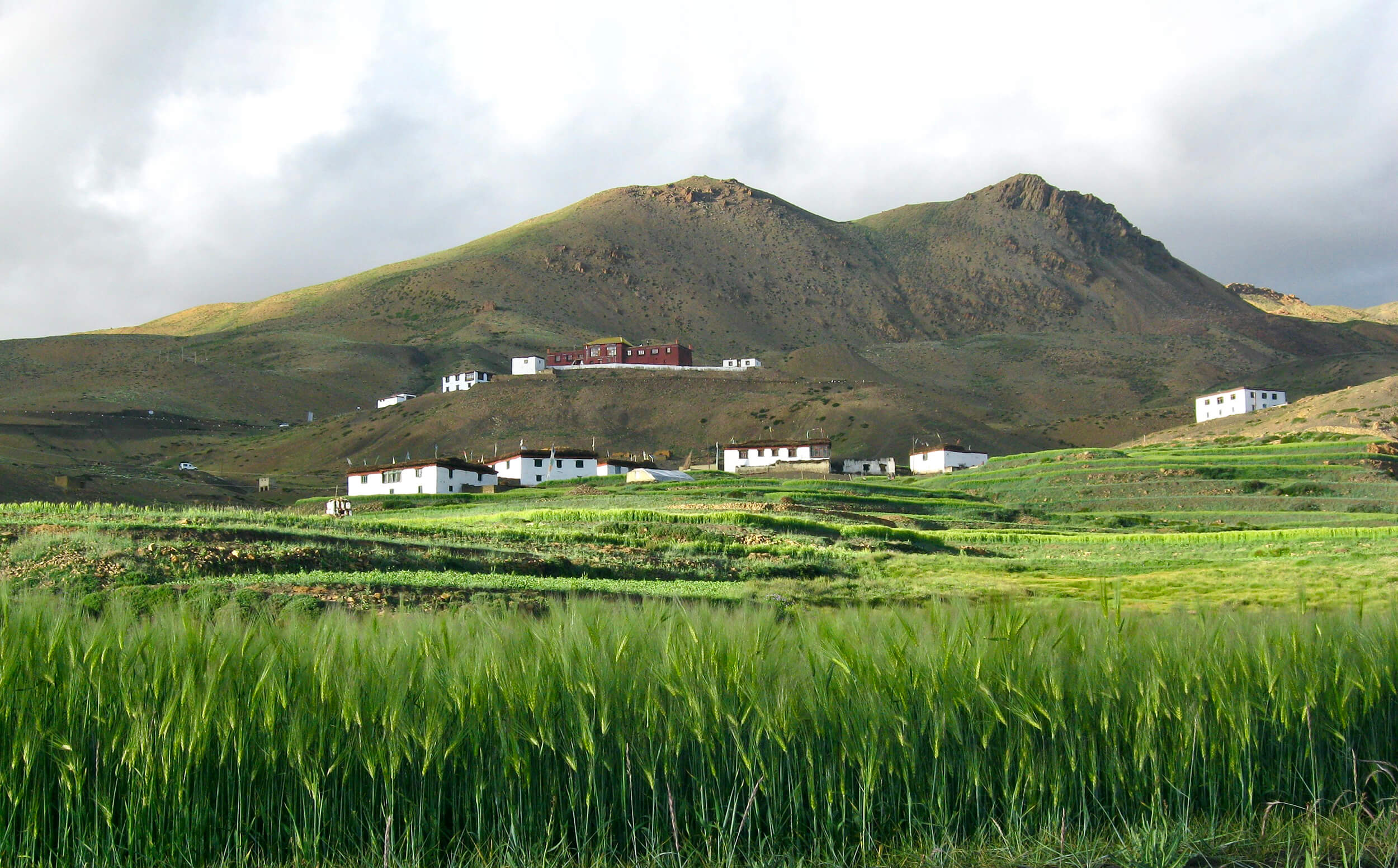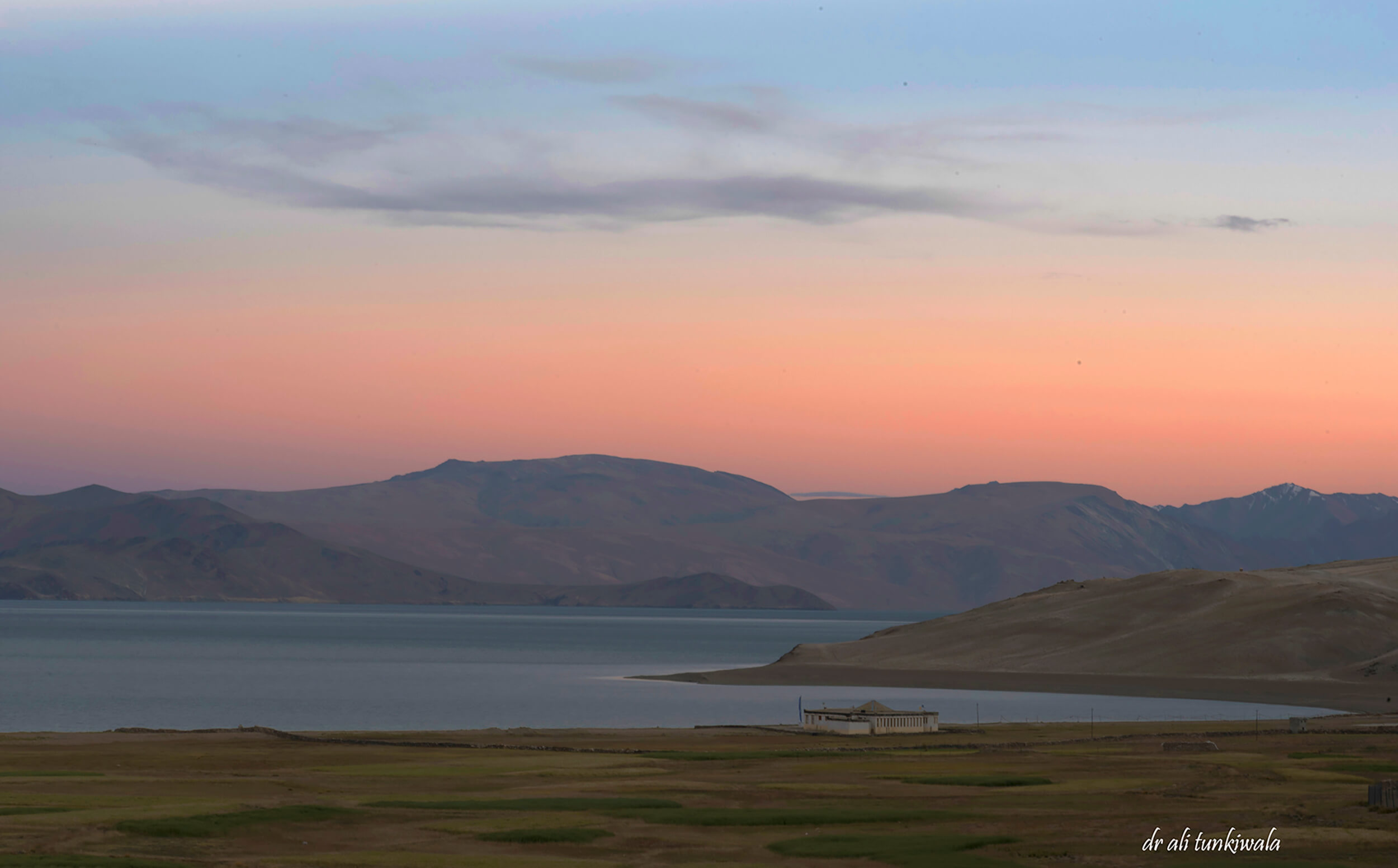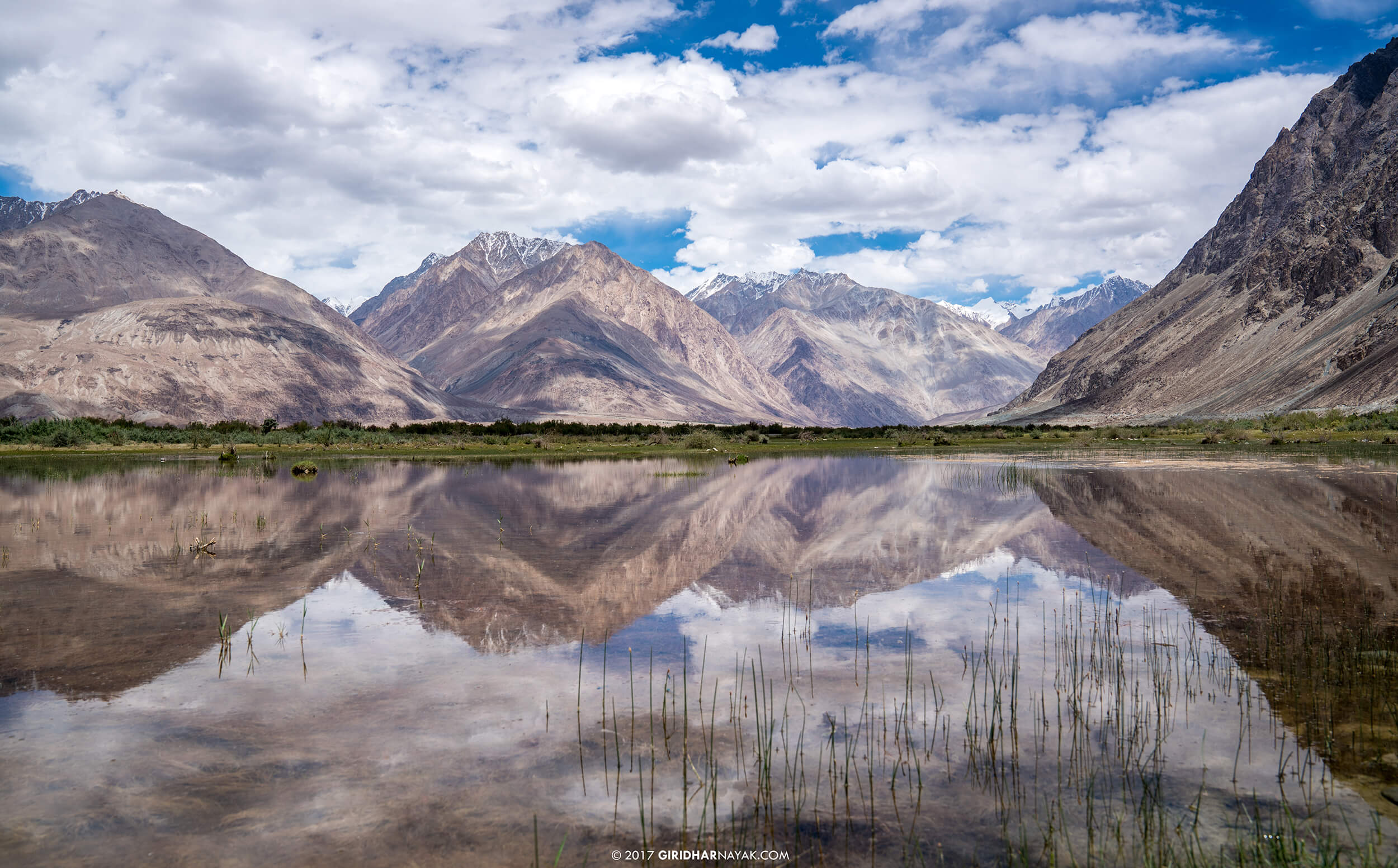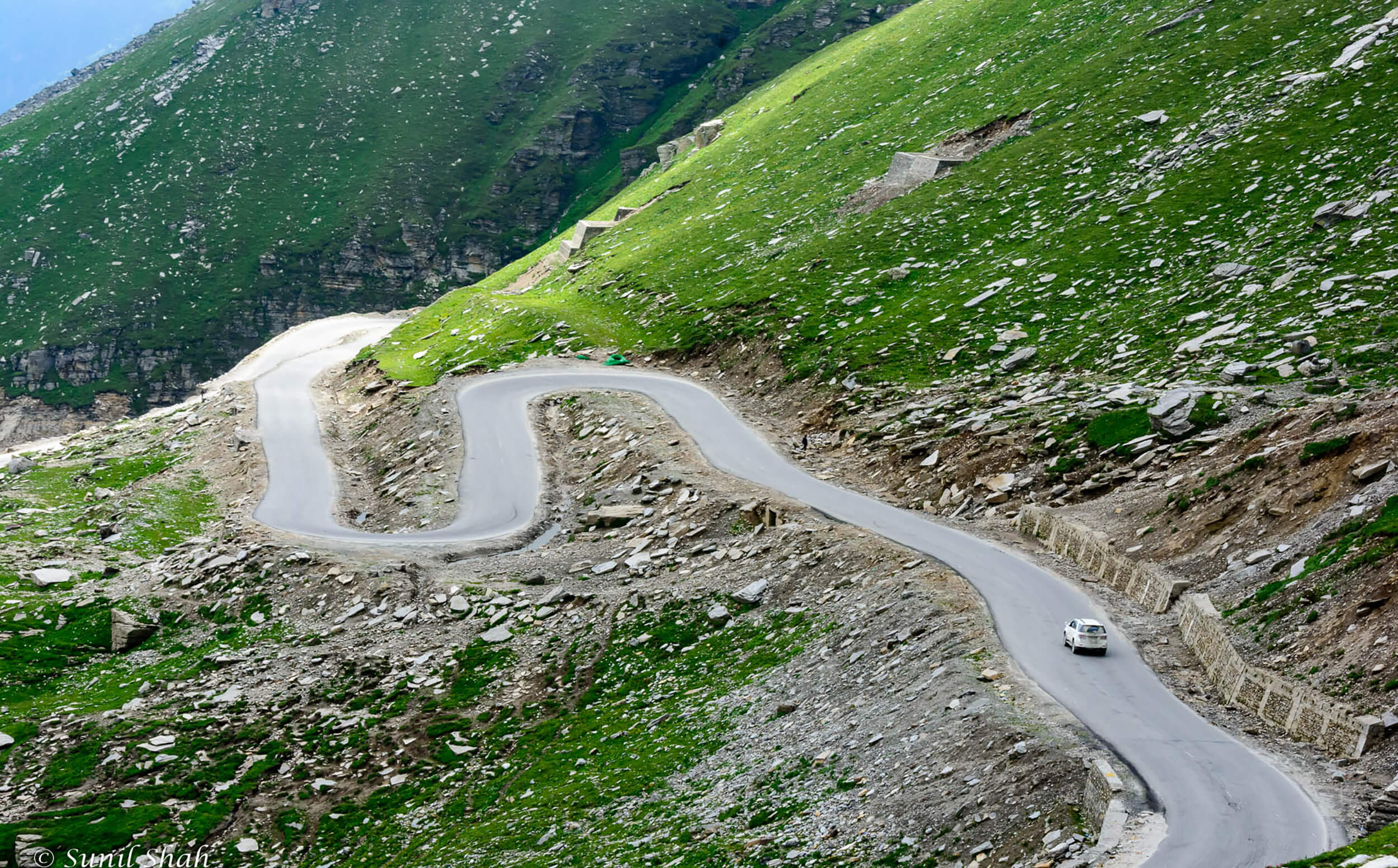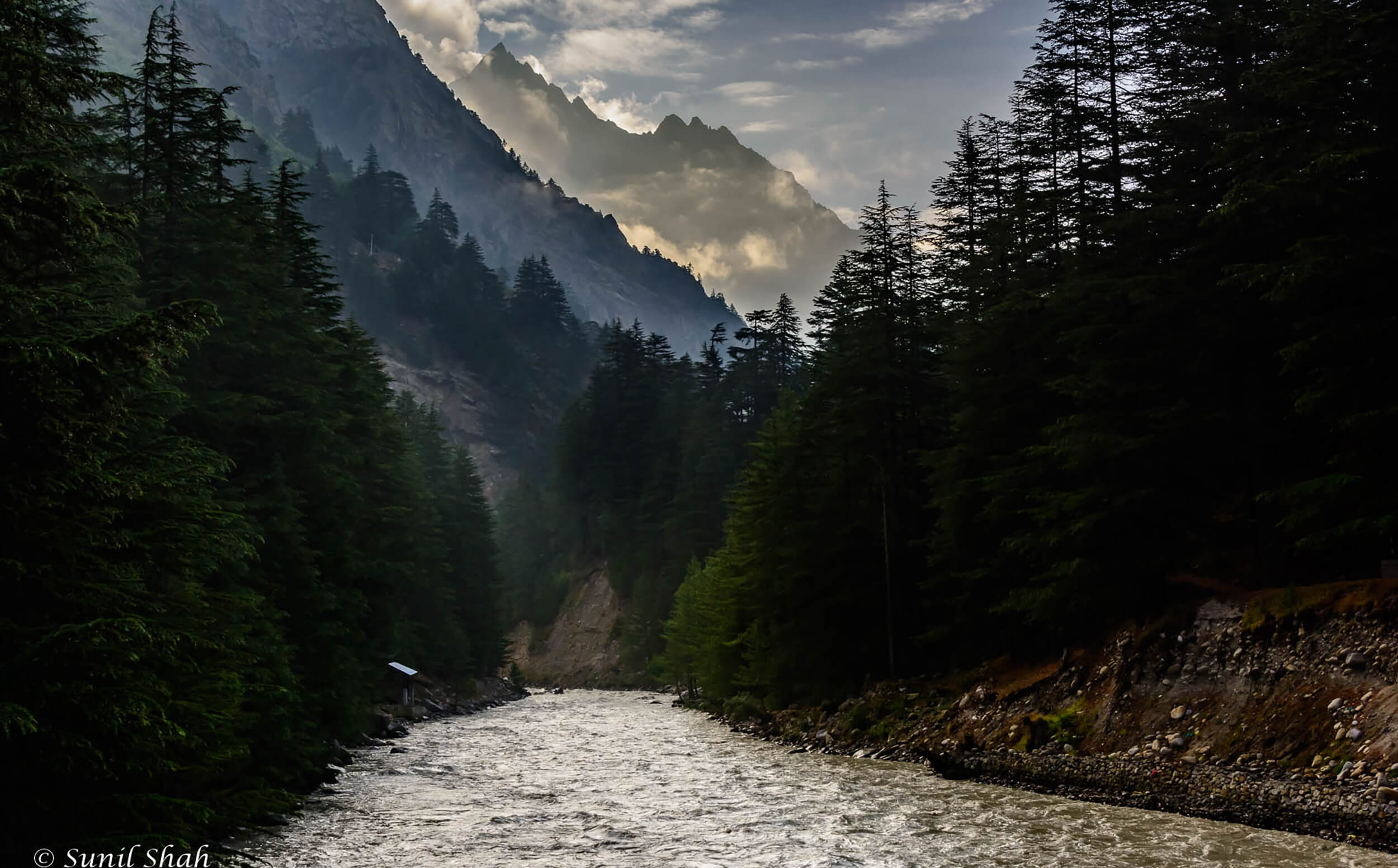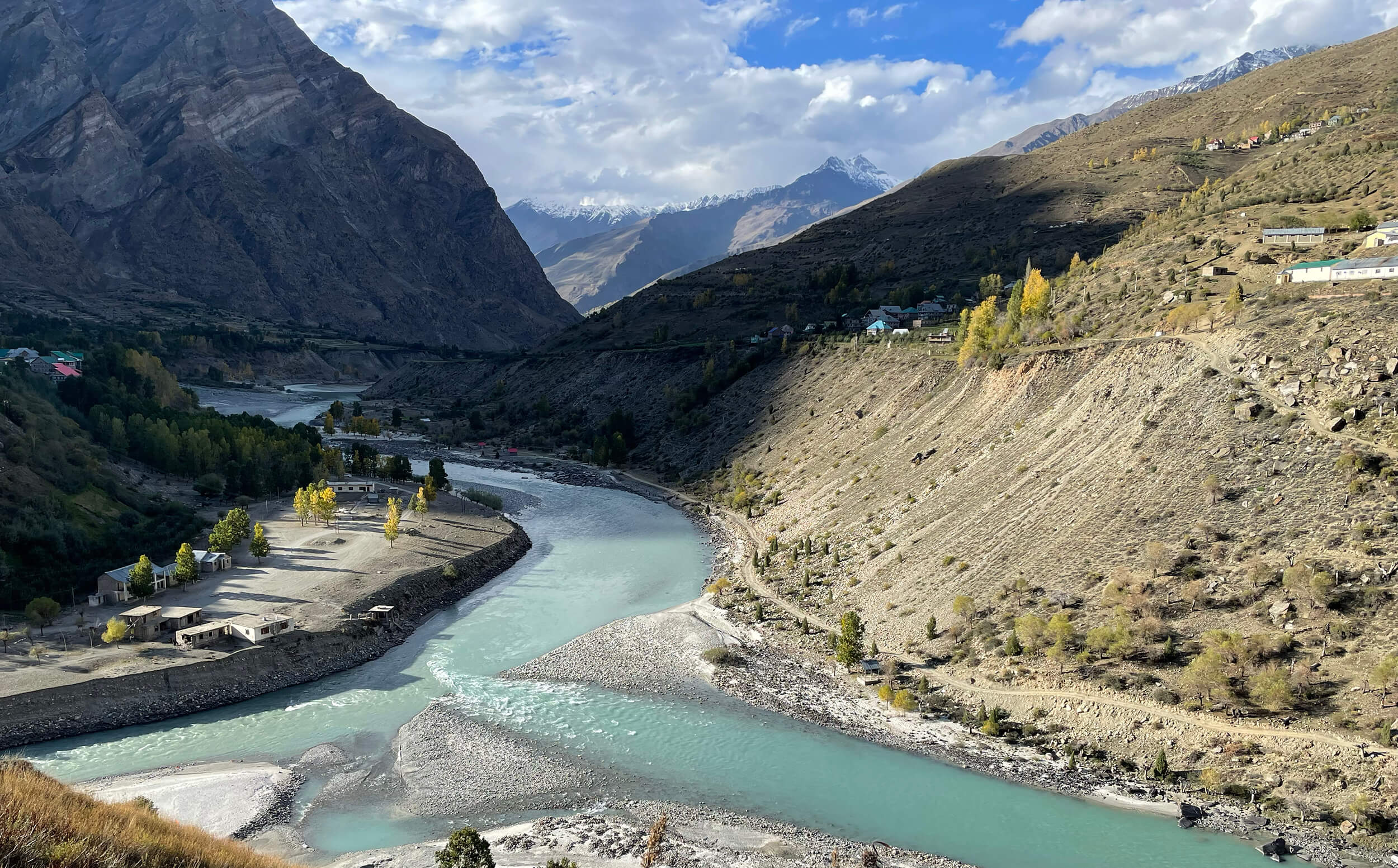The Great Ladakh Journey
- Srinagar Fly In - Manali Drop
11N/12D
Duration
April to October
Best time to visit
Dinner and Breakfast
Meals provided
Hotels or Homestays or Camps
Stay provided
Local experienced driver
Transport
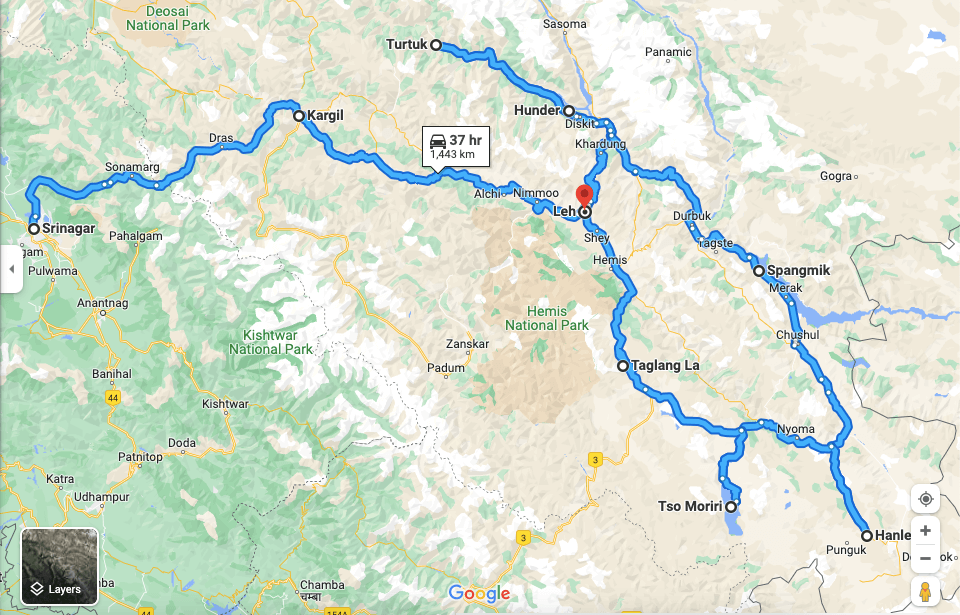
Places Covered
- Srinagar
- Sonmarg
- Zojila Pass
- Drass
- Kargil
- Leh
- Khardungla
- Magnetic Hill
- Pangong
- Hemis
- Thiksey
- Rancho School
- Hundar
- Turtuk
- Tso Moriri
- Puga
- Tso Kar
- Hanle
- Baralacha
- Jispa
- Atal Tunnel
- Manali
Offering some of the best more scenic landscapes in India, this extensive trip is all about the snow-clad mountains, rugged roads, culture and beauty.
You’ll experience:
- Srinagar: The largest city and the summer capital of the union territory of Jammu and Kashmir.
- Sonmarg: Historically significant as a gateway on the ancient Silk Road, connecting Kashmir with Tibet. Today, the hill station is a popular tourist destination amongst fishers and hikers.
- Zojila Pass: Zoji La – Mountain pass of blizzards, is a high mountain pass at an elevation of 3528m (11,575ft). This strip of rock is not the place for a Sunday drive. It’s said to be one of the most treacherous passes in the world.
- Draas: is reputed to be one of the world’s coldest permanently inhabited places, with winter temperatures falling to as low as −40 °F (−40 °C) or colder. It also has the Kargil war memorial or Drass war memorial commemorating the 1999 Kargil War between India and Pakistan
- Kargil: The second largest city in the Ladakh region, Kargil is known for its rich cultural, historical and political importance
- Lamayuru: Popular as the moonscape of India – Lamayuru is known for its monastery, and for its “lunar” landscape. The monastery is built into the moonscape and makes for an interesting visit.
- Leh: The capital of the union territory of Ladakh. Leh has the only airport in Ladakh and is a centre for trade on the silk route.
- Khardungla: At 5359 m Khardung La is famous as one of the world’s highest motorable passes, Khardungla connects the Indus river valley and the Shyok river valley as well as Nubra and Siachen glacier.
- Magnetic Hill: Popular as a gravity hill, It is actually a downhill road, but creates an optical illusion where vehicles appear to roll uphill, defying gravity, making it a fascinating feat.
- Pangong Lake: Spanning eastern Ladakh and West Tibet and situated at an elevation of 4,225 m (13,862 ft). The lake is a salt water lake but freezes during the winter. Its ever-changing shades of blue and stunning reflections attract visitors from across the world.
- Chang La: Another high mountain pass, at Chang La (5391 m) offers a challenging drive and panoramic views. It is often used to cross over from Pangong to Leh.
- Hemis: Home to the iconic Hemis Monastery, this area is famous for its annual Hemis Festival, which celebrates Tibetan Buddhism with masked dances and rituals.
- Thiksey: A picturesque monastery perched atop a hill, Thiksey offers panoramic views and a glimpse into the spiritual and cultural heritage of Ladakh.
- Rancho School: A Buddhist cultural school located in Shey village rose to prominence after the climax scenes of 3 Idiots Bollywood movie were shot in the school.

- Hundar: Hundar is a village in the Leh district of Ladakh, India, famous for sand dunes and Bactrian camels. It is located in the Nubra tehsil, on the banks of the Shyok River. The Hunder Monastery is located here.
- Turtuk: The northernmost villages in India lying very close to the India Pakistan border, in the Baltistan region. The charm of Turtuk is its people and culture. It is one of the few places in India to experience the Balti culture as Turtuk is one of the four Baltistani villages under India’s control.
- Tso Moriri: At an altitude of 4,522 m, it is the largest of the high altitude lakes entirely within India. It is also a place where people go to see exotic birds like the bare-headed goose, the great-crested grebe, the brown-headed gull, the brahmin duck, and more.
- Puga: Puga Valley, a source of vast geothermal energy, attracts a large number of tourists as well as scholars who travel here to study and experience these geothermal events. Its numerous hot springs and mud pools are believed to have medicinal characteristics and can treat skin problems and even rheumatism.
- Tso Kar: Tso Kar is a high-altitude salt lake situated on the Rupshu Plateau of the Ladakh Valley. Tso Kar, also known as the White Lake, is renowned for the white salt deposits that line its shoreline.
| Day | Day Plan | Travel Time |
| Day 1 | Srinagar to Sonmarg | 2-3 hrs |
| Day 2 | Sonmarg to Kargil via Zojila pass, Drass | 4-5 hrs |
| Day 3 | Kargil to Leh via Lamayuru, Alchi, Magnetic Hill, Pathar Sahib, Sangam | 5-6 hrs |
| Day 4 | Around Leh - Shey palace, Thiksey, Hemis, Rancho School, Leh Palace, Shanti Stupa and market | 4-5 hrs |
| Day 5 | Leh to Nubra Valley, via Khardungla Pass. Visit Deskit monastery, Hundar sand dunes | 5-6 hrs |
| Day 6 | Day trip to Turtuk | 5-6 hrs |
| Day 7 | Nubra to Pangong Tso, via Shyok village. Spend the evening by the lake | 5-6 hrs |
| Day 8 | Pangong to Hanle, via Chushul, Rezang La War Memorial | 6-7 hrs |
| Day 9 | Hanle to Tsomoriri | 6-7 hrs |
| Day 10 | Tsomoriri to Jispa via Puga, Tsokar, More Plains, Baralacha, Surajtal | 10-11 hrs |
| Day 11 | Jispa to Manali via Keylong, Sissu, Atal Tunnel | 2-3 hrs |
| Day 12 | Take evening bus back to Chandigarh/ Delhi. Trip ends noon | - |
Your trip includes:
- Breakfast and Dinner as per the plan
- Transport and experienced local driver as per the plan
- Stay at the list of hotels shared as per the plan
- Driver to act as a basic guide
- All expenses for the driver are paid for, including all tolls, fuel, meals and accommodation
- Inner-line permits and Ladakh Environment Fee in Ladakh
- Local coordinator in Leh to handle your trip
Your trip excludes:
- 5% GST
- Lunch, snacks and beverages (except the ones with meals)
- Any kind of insurance/ emergency and evacuation cost
- Local Guide
- Bus ticket cost/Monument Entry fee/Cost of permits
Here is the ultimate packing list for your Ladakh trip.
- Shirt/t-shirt – 3-4
- Jeans/trekking pants – 2
- Windproof jacket of decent quality
- Regular socks – 3-4 pair
- Scarf/muffler (optional)
- Comfortable hiking/training shoes
- Floaters/sandals/chappals
- Water bottle
- Cap/hat
- Sunglasses
- Sunscreen
- Lip balm
- Moisturizer
- Torch/flashlight
- Daypack/small backpack to carry it with you every day
- Prescription medicines (if any)
- Trekking pole (optional)
If you are travelling the in winter – please carry
- Thermals (upper and lower)
- Warm fleece/thick pullover – 2
- Woollen cap
- Woollen gloves
- Woollen socks
Offering some of the best more scenic landscapes in India, this extensive trip is all about the snow-clad mountains, rugged roads, culture and beauty.
You’ll experience:
- Srinagar: The largest city and the summer capital of the union territory of Jammu and Kashmir.
- Sonmarg: Historically significant as a gateway on the ancient Silk Road, connecting Kashmir with Tibet. Today, the hill station is a popular tourist destination amongst fishers and hikers.
- Zojila Pass: Zoji La – Mountain pass of blizzards, is a high mountain pass at an elevation of 3528m (11,575ft). This strip of rock is not the place for a Sunday drive. It’s said to be one of the most treacherous passes in the world.
- Draas: is reputed to be one of the world’s coldest permanently inhabited places, with winter temperatures falling to as low as −40 °F (−40 °C) or colder. It also has the Kargil war memorial or Drass war memorial commemorating the 1999 Kargil War between India and Pakistan
- Kargil: The second largest city in the Ladakh region, Kargil is known for its rich cultural, historical and political importance
- Lamayuru: Popular as the moonscape of India – Lamayuru is known for its monastery, and for its “lunar” landscape. The monastery is built into the moonscape and makes for an interesting visit.
- Leh: The capital of the union territory of Ladakh. Leh has the only airport in Ladakh and is a centre for trade on the silk route.
- Khardungla: At 5359 m Khardung La is famous as one of the world’s highest motorable passes, Khardungla connects the Indus river valley and the Shyok river valley as well as Nubra and Siachen glacier.
- Magnetic Hill: Popular as a gravity hill, It is actually a downhill road, but creates an optical illusion where vehicles appear to roll uphill, defying gravity, making it a fascinating feat.
- Pangong Lake: Spanning eastern Ladakh and West Tibet and situated at an elevation of 4,225 m (13,862 ft). The lake is a salt water lake but freezes during the winter. Its ever-changing shades of blue and stunning reflections attract visitors from across the world.
- Chang La: Another high mountain pass, at Chang La (5391 m) offers a challenging drive and panoramic views. It is often used to cross over from Pangong to Leh.
- Hemis: Home to the iconic Hemis Monastery, this area is famous for its annual Hemis Festival, which celebrates Tibetan Buddhism with masked dances and rituals.
- Thiksey: A picturesque monastery perched atop a hill, Thiksey offers panoramic views and a glimpse into the spiritual and cultural heritage of Ladakh.
- Rancho School: A Buddhist cultural school located in Shey village rose to prominence after the climax scenes of 3 Idiots Bollywood movie were shot in the school.

- Hundar: Hundar is a village in the Leh district of Ladakh, India, famous for sand dunes and Bactrian camels. It is located in the Nubra tehsil, on the banks of the Shyok River. The Hunder Monastery is located here.
- Turtuk: The northernmost villages in India lying very close to the India Pakistan border, in the Baltistan region. The charm of Turtuk is its people and culture. It is one of the few places in India to experience the Balti culture as Turtuk is one of the four Baltistani villages under India’s control.
- Tso Moriri: At an altitude of 4,522 m, it is the largest of the high altitude lakes entirely within India. It is also a place where people go to see exotic birds like the bare-headed goose, the great-crested grebe, the brown-headed gull, the brahmin duck, and more.
- Puga: Puga Valley, a source of vast geothermal energy, attracts a large number of tourists as well as scholars who travel here to study and experience these geothermal events. Its numerous hot springs and mud pools are believed to have medicinal characteristics and can treat skin problems and even rheumatism.
- Tso Kar: Tso Kar is a high-altitude salt lake situated on the Rupshu Plateau of the Ladakh Valley. Tso Kar, also known as the White Lake, is renowned for the white salt deposits that line its shoreline.
| Day | Day Plan | Travel Time |
| Day 1 | Srinagar to Sonmarg | 2-3 hrs |
| Day 2 | Sonmarg to Kargil via Zojila pass, Drass | 4-5 hrs |
| Day 3 | Kargil to Leh via Lamayuru, Alchi, Magnetic Hill, Pathar Sahib, Sangam | 5-6 hrs |
| Day 4 | Around Leh - Shey palace, Thiksey, Hemis, Rancho School, Leh Palace, Shanti Stupa and market | 4-5 hrs |
| Day 5 | Leh to Nubra Valley, via Khardungla Pass. Visit Deskit monastery, Hundar sand dunes | 5-6 hrs |
| Day 6 | Day trip to Turtuk | 5-6 hrs |
| Day 7 | Nubra to Pangong Tso, via Shyok village. Spend the evening by the lake | 5-6 hrs |
| Day 8 | Pangong to Hanle, via Chushul, Rezang La War Memorial | 6-7 hrs |
| Day 9 | Hanle to Tsomoriri | 6-7 hrs |
| Day 10 | Tsomoriri to Jispa via Puga, Tsokar, More Plains, Baralacha, Surajtal | 10-11 hrs |
| Day 11 | Jispa to Manali via Keylong, Sissu, Atal Tunnel | 2-3 hrs |
| Day 12 | Take evening bus back to Chandigarh/ Delhi. Trip ends noon | - |
Your trip includes:
- Breakfast and Dinner as per the plan
- Transport and experienced local driver as per the plan
- Stay at the list of hotels shared as per the plan
- Driver to act as a basic guide
- All expenses for the driver are paid for, including all tolls, fuel, meals and accommodation
- Inner-line permits and Ladakh Environment Fee in Ladakh
- Local coordinator in Leh to handle your trip
Your trip excludes:
- 5% GST
- Lunch, snacks and beverages (except the ones with meals)
- Any kind of insurance/ emergency and evacuation cost
- Local Guide
- Bus ticket cost/Monument Entry fee/Cost of permits
Here is the ultimate packing list for your Ladakh trip.
- Shirt/t-shirt – 3-4
- Jeans/trekking pants – 2
- Windproof jacket of decent quality
- Regular socks – 3-4 pair
- Scarf/muffler (optional)
- Comfortable hiking/training shoes
- Floaters/sandals/chappals
- Water bottle
- Cap/hat
- Sunglasses
- Sunscreen
- Lip balm
- Moisturizer
- Torch/flashlight
- Daypack/small backpack to carry it with you every day
- Prescription medicines (if any)
- Trekking pole (optional)
If you are travelling the in winter – please carry
- Thermals (upper and lower)
- Warm fleece/thick pullover – 2
- Woollen cap
- Woollen gloves
- Woollen socks
Detailed itinerary
Your journey to the highest reaches of North India begins. The 1st stop is Zoji La pass. The Zoji La sits mighty 3,528 metres above sea level. When captured by Pakistan in 1947, the Indian Army had deployed massive tanks to win it back. It was the first time that tanks were deployed at high mountain passes.
Further along is Drass, Dras is a small village and is known as the 'Gateway to Ladakh’. But it is more famous as the second coldest inhabited place in the world and the coldest inhabited place in India. The average winter temperature is around -22Cº. Just before Kargil and you encounter the Dras War Memorial that commemorates the martyrs of the Kargil War. The sandstone wall has all the names of the martyrs inscribed on it. Stop by the souvenir shop to pick up some memorabilia.
Made world famous mainly because of the India-Pakistan war in the 1990’s, Kargil's inhabitants have a lot of stories to share about how much the war has change things for Kargil. Ladakh's second largest town, does not disappoint as far as the beautiful scenery and warm and friendly locals are concerned, but you will still find an overall sense of awareness with the country's border being just around the corner. Check in at your hotel after a visit to the famous sandstone wall with names of all Indian army personnel who died in the Kargil war.
Begin your day with a leisure breakfast.
We head towards Leh city today. A few of kilometres ahead of Kargil and you will be greeted by gently fluttering prayer flags and smiling children, at the entrance to Lamayuru. Formations that resemble the moon surface start appearing as soon as you get close to Lamayuru village with its 11th century monastery. A short hike to the 'meditation hill' for some outstanding views of the surroundings and its rock formations.
Stop at Alchi to visit the monastery - one of the oldest monasteries in Ladakh (a national heritage) Alchi Monastery, mainly known for its magnificent and well-preserved 11th- or 12th-century wall paintings, all in an Indo-Himalayan style.
48 kilometres before Leh town would take you to the point where the rivers Indus and Zanskar meet. The muddy waters of the Zanskar merge with the turquoise blue water of the Indus to flow westwards. Just before the Sangam. After visiting the confluence we head to Leh with a pit stop at the Gurdwara Patthar Sahib. Legend has it that a demon who terrorised the area, pushed a boulder onto Guru Nanak who had come to help - leaving a hollow impression of a person on the stone and the Guru unscathed. Discovered in the 1970's while building a road, the boulder has now been placed in the gurdwara maintained by the Indian Army.
Last stop for the day is the magnetic hill, get up close and personal with the super-charged famed magnetic hill. Pay close attention as your car climbs up without any thrust on a seemingly uphill tarmac.
After breakfast we begin the scenic drive to Nubra valley and the sand dunes of Hunger via Khardung La. One of the world's highest motorable passes, Khardung-La is one of Ladakh's most popular destinations. A couple of lovely photographs later on K-top, we start out descent to Nubra Valley. We do not suggest you stay up here for long and avoid AMS.
The drive will get relatively more comfortable after North Pullu with better roads as the valley opens up. Make your way towards the spectacular Diskit Monastery while crossing through the quaint Khardung village.
Check-in to your camp/hotel in Nubra village and relax for a bit. We will have to make our last visit of the day about 7 kilometres to the sand dunes of Hundar. Get to see and ride the fascinating two-humped Bactrian camels in the sand dunes. The impressive views of the grey dunes, the glacial river and the rugged snow-capped mountain peaks set Hunder in a league of its own here. Hundar, apart from housing the mandatory monastery is a charming little village with several shrines higher up.
The most breathtaking and remote landscapes of Ladakh. Begin your journey from the striking Tso Moriri Lake. You'll pass through the small village of Puga. Known for its geothermal springs and unique landscapes. The area around Tsokar is inhabited by nomadic Changpa herders. The route now takes you More Plains, As you approach the flat, dusty stretches of the Moore plains it gives you a welcome break from the stomach churning roads so far. You see cattle and sheep grazing on the green plains. A nice contrast to the high brown mountains you have been seeing so far.
Next you cross the Gata Loops. These 21 Gata Loops or hairpin bends are stomach churning and exciting and take you to the Nakila Pass. By now you would have seen various shades of mountains ranging from brown to red to purple. As your cross Zing Zing bar and Baralacha La you get a chance to admire the vastness and the true beauty of the Himalayas. Visit Suraj Taal on your way and stop for pictures against this emerald lake.
Reach Jispa and rest.
Related Tours
- Ex Chandigarh
- 9 Nights and 10 Days
- Best time to visit: May to October
- Ex Manali
- 7 Nights and 8 Days
- Best time to visit: May to October
- Srinagar Fly In - Leh Fly Out
- 7 Nights and 8 Days
- Best time to visit: April to October
- Ex Leh Airport
- 6 Nights and 7 Days
- Best time to visit: April to October
- Ex Chandigarh
- 6 Nights and 7 Days
- Best time to visit: All year round
- Ex Chandigarh
- 6 Nights and 7 Days
- Best time to visit: All year round
- Ex Chandigarh
- 5 Nights and 6 Days
- Best time to visit: May to November



